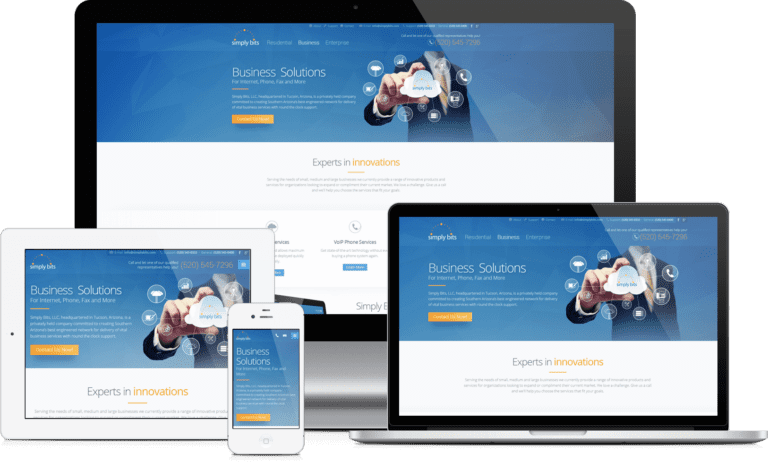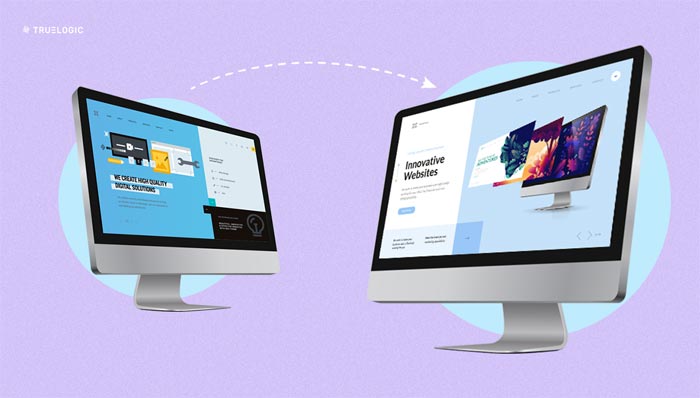Things Your Website Can Do in 2023 (But You Probably Didn’t Know)

As a business owner, you may be aware of the basic functions of your website, such as displaying products and services, providing contact information, and allowing customers to make purchases. However, there are many additional features and capabilities that your website may have that you may not be aware of.
In this article, we will explore some of the things your website can do that you may not have known about, and how they can benefit your business.
E-commerce
If your website has an online store, you may already be familiar with the basic e-commerce functions such as product catalogs, shopping carts, and payment gateways. However, there are many additional features that can enhance the customer experience and increase sales.
- One-page checkout: A one-page checkout streamlines the checkout process by condensing all the necessary steps into one page, making it quicker and more convenient for customers to complete their purchases.
- Abandoned cart recovery: This feature allows you to send automated emails to customers who have added items to their cart but haven\’t completed their purchase, reminding them of their items and encouraging them to complete their purchase.
- Product reviews and ratings: Allowing customers to leave reviews and ratings on your products can help increase trust and credibility, as well as provide valuable feedback for product development.
- Up-selling and cross-selling: By displaying related or complementary products, you can increase the average order value and boost sales.
Data collection and analysis
Your website can also serve as a valuable tool for collecting and analyzing data on your customers and their behavior. Additionally, in order to make proper use of the data you gathered from your website you can look into conversion rate optimization services.
- Google Analytics: This free service can be integrated into your website to track user behavior, such as page views, bounce rate, and conversion rate. This data can be used to optimize your website and improve the customer experience.
- Heat mapping: Heat mapping software tracks where users click on your website, allowing you to see which areas are getting the most attention and which areas may be overlooked. This information can be used to improve the layout and design of your website.
- Surveys and polls: By creating surveys or polls on your website, you can gather valuable feedback on your products and services, as well as gain insight into your customers’ needs and preferences.
Content marketing
Your website can also be used to create and distribute valuable content, such as blog posts, videos, and infographics, to attract and engage with your target audience.
- Blogging: A blog can be used to provide useful information and resources, establish thought leadership, and build relationships with your customers.
- Video marketing: Videos can be used to demonstrate your products, provide tutorials, and tell your brand’s story, which can be shared on social media platforms and embedded on your website.
- Infographics: Infographics can be used to present complex information in an easy-to-understand visual format, which can be shared on social media and embedded on your website.
Email marketing
Your website can also be used to collect and manage email addresses, allowing you to reach out to your customers and prospects with targeted campaigns.
- Email capture forms: These forms allow you to collect email addresses from website visitors, which can be used to build your email list and send targeted campaigns.
- Automated email campaigns: Automated campaigns can be set up to send targeted emails to specific segments of your email list, such as abandoned cart recovery emails or welcome emails for new subscribers.
- Email personalization: By collecting data on your customers, such as their name, purchase history, and browsing behavior, you can personalize your email campaigns for a more engaging experience.
Live Chat
Live chat software allows businesses to communicate with website visitors in real time, providing an immediate and personal touch point for customer support, sales and engagement. This can be a quick and efficient way to answer customer questions and provide assistance, as well as gather information about the customer’s needs and preferences.
Mobile Optimization
With the increasing number of users accessing the internet from mobile devices, mobile optimization has become an essential aspect of website design. This includes ensuring that the website is easily navigable on a smaller screen, as well as optimizing images and content for faster loading times. Additionally, businesses businesses and their partner web design agency can set up regular backups of their website to ensure that any data lost can be easily restored.
Integration with third-party platforms
Your website can be integrated with a variety of third-party platforms to enhance its functionality and capabilities. This can include social media platforms, such as Facebook and Twitter, to share content and engage with customers, as well as payment gateways, such as PayPal and Stripe, to facilitate online transactions. Additionally, businesses can integrate their website with marketing automation platforms, such as Hubspot and Marketo, to track and analyze customer behavior, and CRM platforms, such as Salesforce and Zoho, to manage customer interactions.
Security and backup
Website security is crucial to protect your business and your customers from cyber threats, such as hacking and data breaches. This can include adding an SSL certificate to encrypt data transmitted on the website, as well as regularly updating software and plugins to address any vulnerabilities. Additionally, businesses can set up regular backups of their website to ensure that any data lost can be easily restored.









